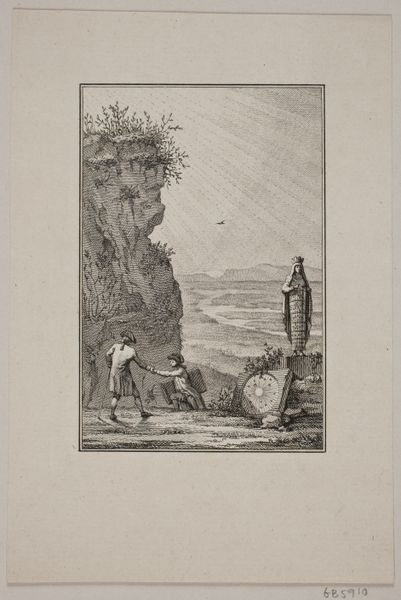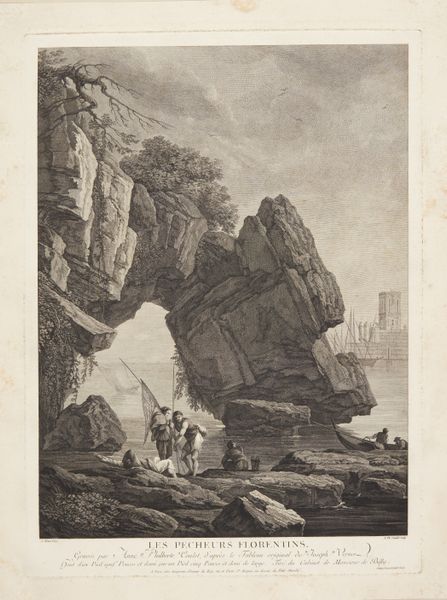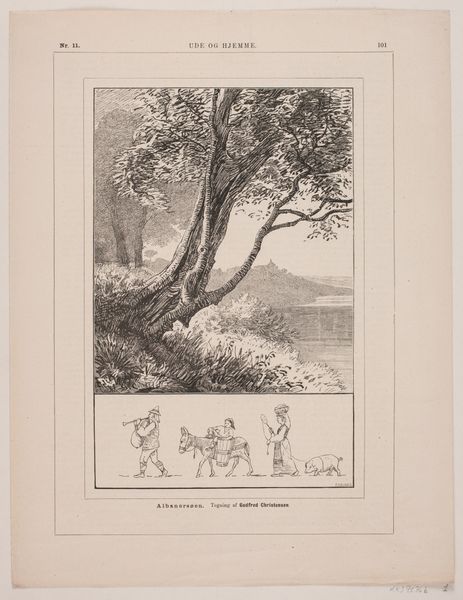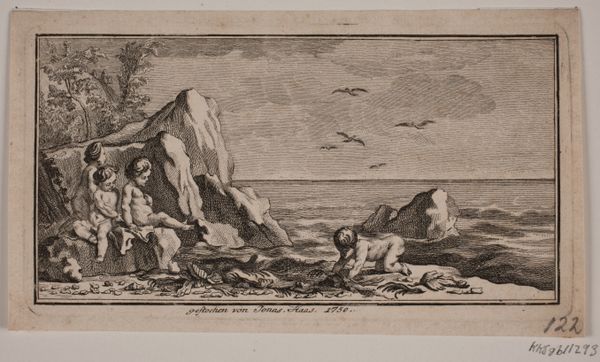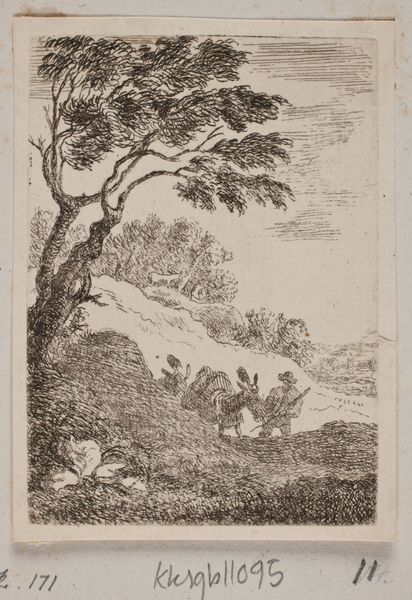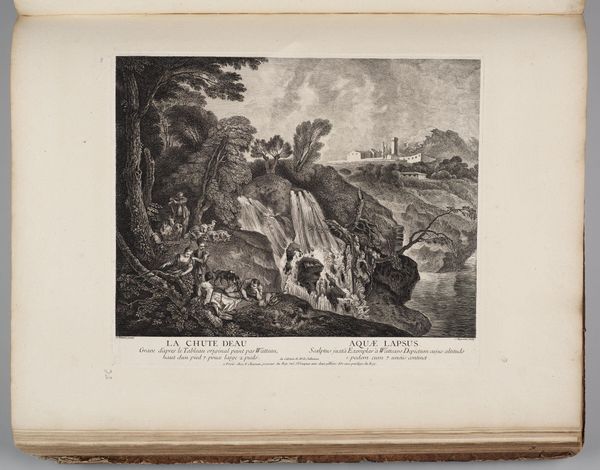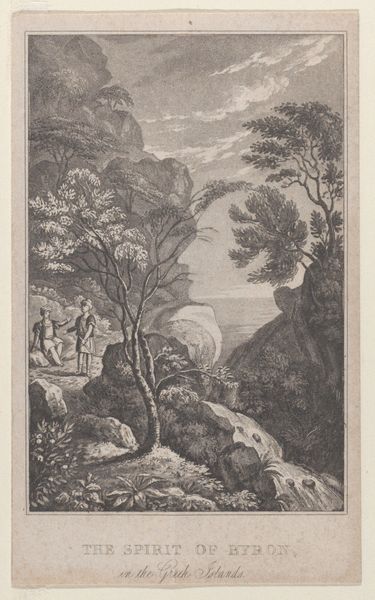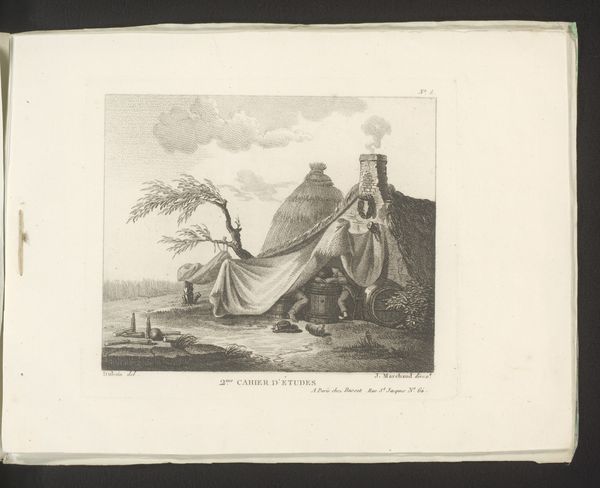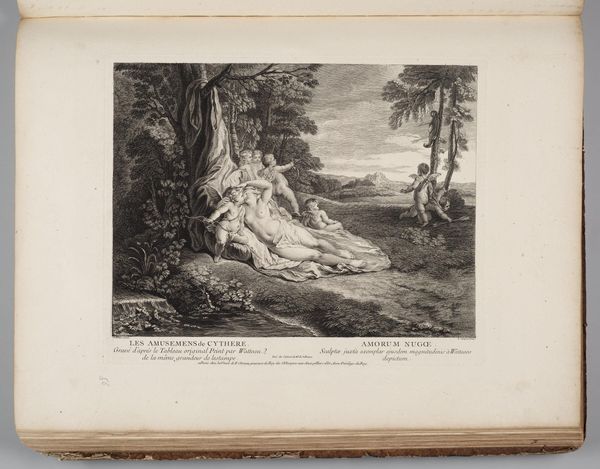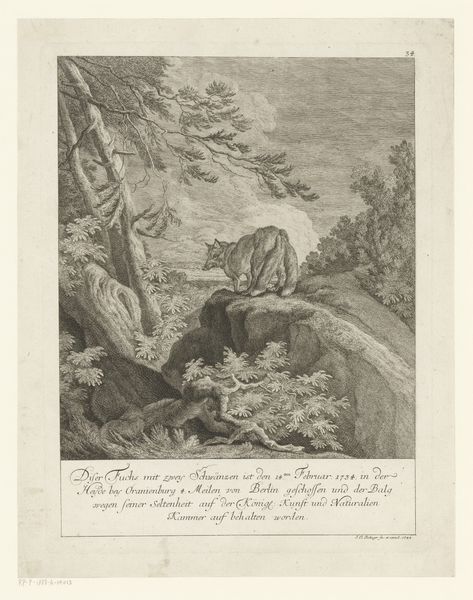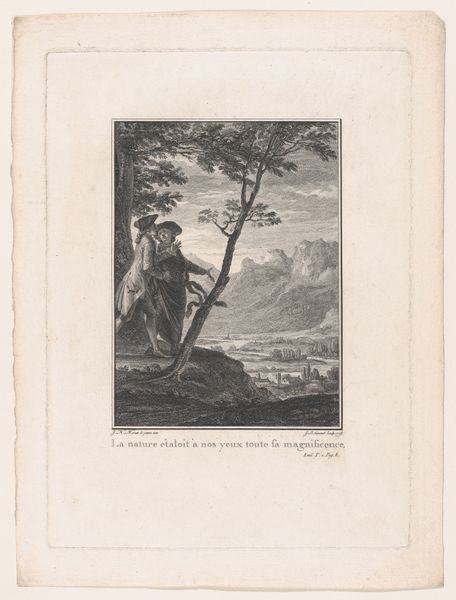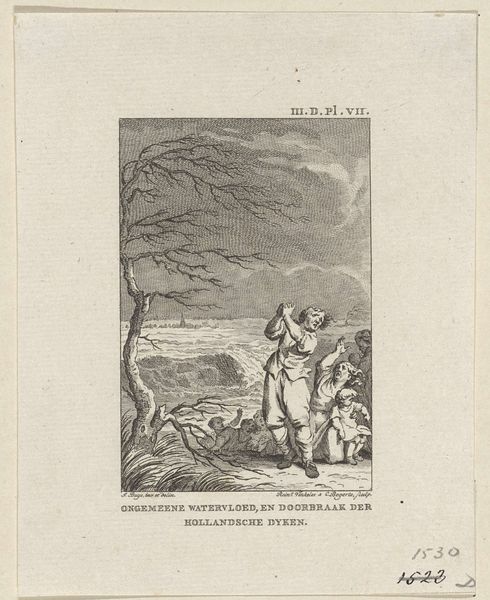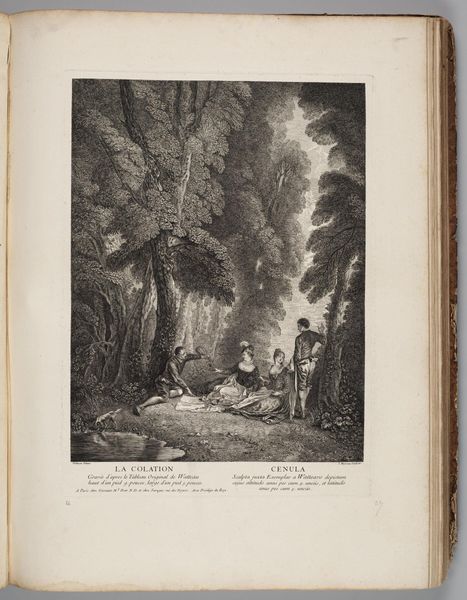
drawing, print, etching
#
drawing
# print
#
etching
#
landscape
#
history-painting
Dimensions: 148 mm (height) x 107 mm (width) (billedmaal)
Editor: This etching, “Titelkobber til August Hennings: \"Olavides\"", made in 1779 by J.F. Clemens, depicts a scene with figures in a landscape. I’m struck by how the statue in the background is framed by a dynamic sky. What symbolic weight does the artist embed within this image? Curator: The statue is the focal point, certainly. Observe how it's juxtaposed with the helping hand extended to a seated figure near a precipice. The statue could represent stability and established order, perhaps even divine guidance, contrasted with earthly challenges of aid and human action. Consider how these symbolic elements might speak to 18th-century notions of enlightenment and social responsibility. Editor: So the image offers both the promise of guidance and a reflection on contemporary society? The setting itself seems significant – not just any landscape. Curator: Exactly! Landscapes in art often carry allegorical weight, they’re never simply decorative. Is the mountain to the left salvation or is it some kind of threat? Mountains often represent trials or even spiritual enlightenment. Look closely at what grows there: resilience and resourcefulness. Clemens invites us to consider how landscape itself, rendered and filled with visual symbols, speaks of aspiration and earthly endeavor. Editor: It's fascinating how much meaning can be layered into what seems like a simple image! Now, I notice that a bird is placed above the land; would that have had meaning at the time? Curator: Definitely! Birds often signify the soul or spiritual ascent. Consider its flightpath relative to the statue and those figures, is it freedom from burden, salvation? It amplifies those tensions present within this engraving, about moral and philosophical concerns relevant at the time, made timeless through its art. Editor: That's such an interesting interpretation. Thank you. Curator: My pleasure. Remember to consider the cultural vocabulary each image inherits from previous eras, and it enables us to decode and rediscover meaning within the image.
Comments
No comments
Be the first to comment and join the conversation on the ultimate creative platform.
